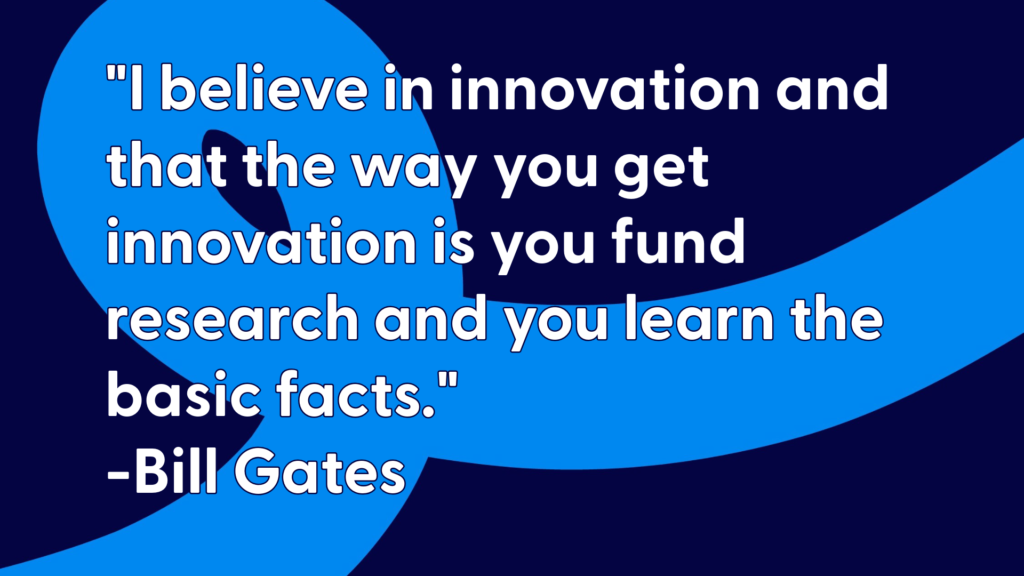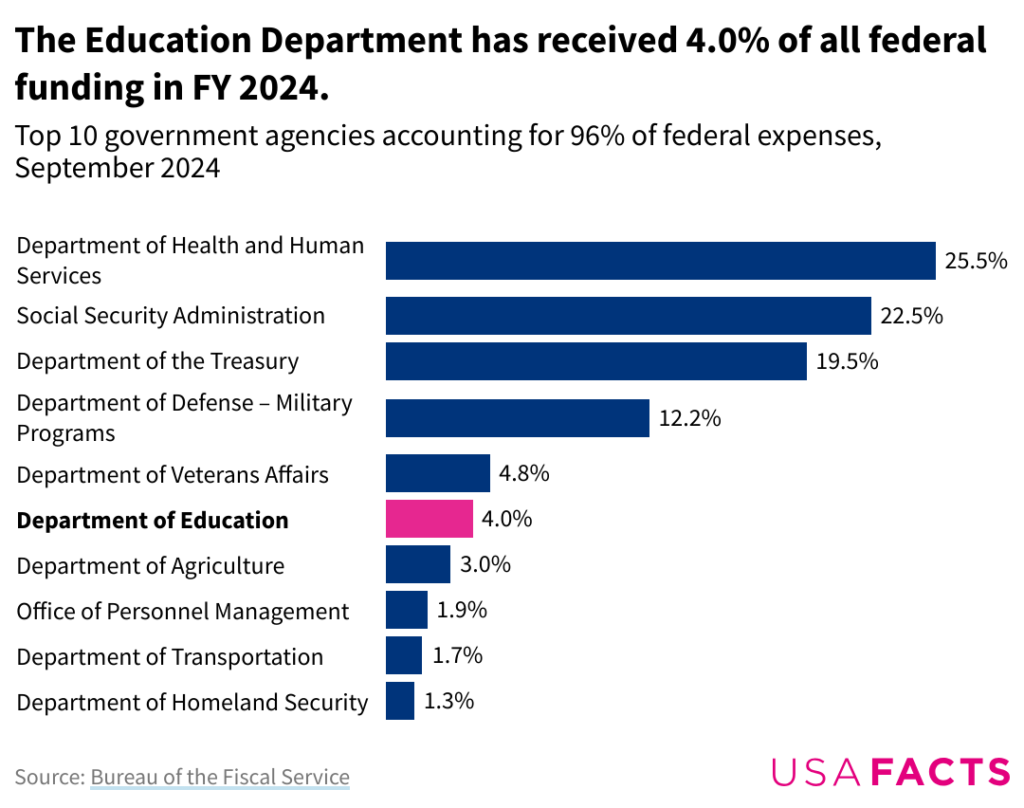Call to action: Institute of Education Sciences: What is it? Why should I care?
Note. Should I omit information, please email or comment. As always, I will do my best to add relevant information here or in a future post.

Call to action: Please sign the petition
If you don’t need this article to realize the necessity of the Institute of Education Sciences (IES) and their role in funding high quality independent educational grant research, then please sign this petition in an effort to halt actions by DOGE and the current Presidential administration: https://chng.it/vjdYGZw9wz
If you just need the numbers to sign the petition:
- 2024 entire Federal Budget was $6.75 trillion.
- IES had an $807 million budget in 2024
- Between $800 million and $1 billion in IES research grants were cut by DOGE (Grants are paid over multiple years. See the note below.)
- Note. In this Washington Post Article posted 2/13/2025 by Meckler and Natanson, Nat Malkus, a senior fellow at American Enterprise Institute DOGE may have overstated the cost of the canceled contracts because many of the contractors were several years into the agreements, meaning the money has already been spent.
- In other words, canceling the grants right now likely caused more waste, especially if the studies cannot be completed due to lack of funding.
Other reasons to sign:
- IES is part of the accountability arm of the education system
- Studies are being cut short including one called, ReSolve designed to help students learn math faster.
- Federal funding cuts including grant funding to researchers at the institutions is devastating. This article in the GW Hatchet by Jenna Lee (2/11/2025) addresses lawsuits related to the NIH Federal funding cuts
- DOGE cut additional resources within that funding including:
- Common Core of Data, primary database of all K-12 schools with enrollment, demographics, and other information is collected
- What Works Clearinghouse: a project that has been essential to facilitating decisions for administrators and educators (see below for more)
- School Pulse Panel: began surveying K-12 public schools about education related topics
- Studies about international education
- Career and technical education
- Early childhood education
Contact your congressmembers. Protect this funding so our country can move forward with improving our education system on the whole vs. backwards. We need independently funded research. It is paramount.

If you need more convincing or just want some background, then read on.
Briefly…why do we have a Federal Department of Education?
Before we can discuss the Institute of Education Sciences (IES), we need to consider, why do we have a Federal Department of Education (DoEd)? Can’t the states do everything?
Time machine:
Let’s hop in our “time machines” and review history:
- 1867: The 39th US Congress passed the legislation to establish the first DoEd, which was signed by President Andrew Jackson. Some historical information is available via this article by Cross and Islas.
- Non-cabinet level agency with Henry Barnard as the first commissioner (and a staff of 3 and only 2 rooms)
- Objectives:
- improve American education by providing strong education information to local- and state-level authorities without having official control of the authorities in the states
- collect statistics and facts to show educational progress across states and territories
Henry Barnard
He deserves his own post (if I have time). For now, review the Barnard Papers and the information from Cross and Islas. Barnard had to collect data from the schools and send it to practitioners. He and his small staff produced reports and research to help give a context for education.
- July 20, 1868: Congress decided the the efforts by Barnard was a waste of national resources, reduced the funding, and then on June 30, 1869 removed the DoEd’s independent status and relabeled it the Office of Education with the Department of Interior.
- 1870: John Eaton served as the US Commissioner of Education until 1886 with only a $6000 yearly budget.
- 1889 to 1906: Commissioner William Torrey Harris continued the data collection and expanded it to include public and private elementary school enrollment.
This path continued, the name changed and shifted. In 1953, the Department of Health, Education, and Welfare. More funds were available due to political and social circumstances.
In 1963, President Lyndon B. Johnson emphasized the need for education to fight poverty leading to the Higher Education Act (1965) and Elementary and Secondary Education Act (1965).
Now, it’s 1979, President Jimmy Carter signed into law the Department of Education Act
This established the Federal Department of Education as a cabinet-level department.
What kind of funding did DoED receive in 2024?
Per USAfacts.org, DoED received 4% of all federal funding in 2024, totaling $268.35 billion.

DoEd is the smallest of any cabinet-level department with about 4,100 full-time employees (as of 2023).
What is/was the function of DoEd as of 2024?
Note. Given the unknowns related to what data/websites will remain available under the current administration, I cannot guarantee the existence of any links to federal websites. If you click a link and it is gone, then please contact me and I will do what I can to find the information and make it accessible (when possible).
Under the Dept of Education Organization Act (PL 96-88), the DoEd was created to do the following: (The following is directly quoted from the linked page)
- “Strengthen the Federal commitment to assuring access to equal educational opportunity for every individual;
- Supplement and complement the efforts of states, the local school systems and other instrumentalities of the states, the private sector, public and private nonprofit educational research institutions, community-based organizations, parents, and students to improve the quality of education;
- Encourage the increased involvement of the public, parents, and students in Federal education programs;
- Promote improvements in the quality and usefulness of education through Federally supported research, evaluation, and sharing of information;
- Improve the coordination of Federal education programs;
- Improve the management of Federal education activities; and
- Increase the accountability of Federal education programs to the President, the Congress, and the public.”
As noted on the about page for DoEd, the mission “is to promote student achievement and preparation for global competitiveness by fostering educational excellence and ensuring equal access for students of all ages. Learn more about our mission, offices within ED, key initiatives, and more.”
What is the Institute of Education Sciences (IES)?
Brief Background
In 2002, President George W. Bush signed into law the Education Science Reform act (note, the link is to a compilation as amended and is unofficial) establishing the Institute of Education Sciences (IES).
“The mission of IES is to provide rigorous evidence on which to ground education practice and policy,” per https://www.ed.gov/about/ed-offices/ies.
Dr. Grover J. Whitehurst, the first director of IES, reviews the founding of IES in this journal article from 2018 entitled The Institute of Education Sciences: A Model for Federal Research Offices.
List of Some of the Products and Activities Conducted by IES
- National Assessment of Educational Progress: (Unknown)
- student achievement measure that is nationally representative and continuing assessment of what students know and can in several subjects
- data is used to help guide decisions to improve education in the country
- What Works Clearing House: (cut)
- collection of research-based evidence about programs and practices
- goal is to help stakeholders (educators, policymakers, and researchers) find the best practices for classrooms and schools
- National Center for Education Evaluation and Regional Assistance: (cut)
- provides unbiased, large-scale evaluations of education programs receiving federal funding
- provides training and coaching to states, districts and higher education institutions
- encourages development and use of research and evaluation in systems across the US
- National Center for Education Research: (Grant funding cut)
- promotes high quality and rigorous education science research
- funds research and training programs that can help improve practice, systems, and policy to optimize US education outcomes
- National Center for Special Education Research: (Grant funding cut)
- promotes high quality comprehensive research to expand knowledge of children and youth with or at risk for disabilities
- age range is infancy through post-secondary education
- ERIC: Repository of education related information including journal articles, dissertations, and other such resources
Importance of IES
IES is how we improve education. Under this institute, there have been education advances. Chester Finn wrote commentary on February 12, 2025 about this current situation with funding cuts to IES by DOGE. IES in its current form “corrected much of what was weak and wasteful in the previous arrangement —and the new agency got off to a strong start under the leadership of Grover (Russ) Whitehurst, who strove with considerable success to see that its work would be conducted as proper scientific research—controlled experiments, etc.—and data gathered and reported with objectivity and integrity”.
Within the notes, Mr. Finn linked to an interview with Dr. Whitehurst about Evidence-Based Education Science and the Challenge of Learning to Read.
Information for this post was pulled from these webpages (citations also linked within the post itself as appropriate):
Disclaimer: Including these links is not intended as Nixon Speech and Language, LLC’s or my an endorsement OR agreement with information created by the authors, companies, institutes, or websites. If you find factually inaccurate information in my post or a link, then please let me know and I will adjust.
- History of the department of education:
- https://education.stateuniversity.com/pages/2527/U-S-Department-Education.html
- https://en.wikipedia.org/wiki/United_States_Department_of_Education
- https://findingaids.library.nyu.edu/fales/mss_033/
- https://www.edweek.org/policy-politics/jimmy-carters-education-legacy-stretched-from-the-school-board-to-the-white-house/2024/12
- https://usafacts.org/explainers/what-does-the-us-government-do/agency/us-department-of-education/
- History of IES:
- Actions by DOGE and the Trump administration (2025) specific to IES:
- https://fordhaminstitute.org/national/commentary/easy-doge-ies-matters
- https://www.usatoday.com/story/news/education/2025/02/11/doge-musk-education-department-research/78411180007/
- https://www.washingtonpost.com/education/2025/02/13/doge-education-department-cuts/
- https://www.yahoo.com/news/education-department-pauses-research-contracts-020456976.html
- https://www.propublica.org/article/department-of-education-institute-education-science-contracts-doge
Disclosure. I am writing this as a supporter of strong education science and research. I am writing this as educators need rigorous peer-reviewed randomized studies to facilitate decisions. In my opinion, they also need access to quickly disseminated information as is available in What Works Clearinghouse. I am concerned at the likely negative outcomes for all children, but particularly those with learning disabilities or at risk for learning disabilities.
I worked at the Institute of Education Sciences from January 2004 through about March 2005 in the National Center for Education Research. I saw the amazing research. I watched the peer reviews.
Disclaimer. Information provided in this post by, Stephanie M. Nixon, Ph.D., CCC-SLP, is provided in good faith. Nixon Speech and Language, LLC makes no representation or warranty of any kind, express or implied regarding the accuracy, adequacy, validity, reliability, availability, or completeness of any information.
The opinions expressed in this post, are exactly that, opinions of Stephanie M. Nixon, Ph.D., CCC-SLP.
Leave a Reply